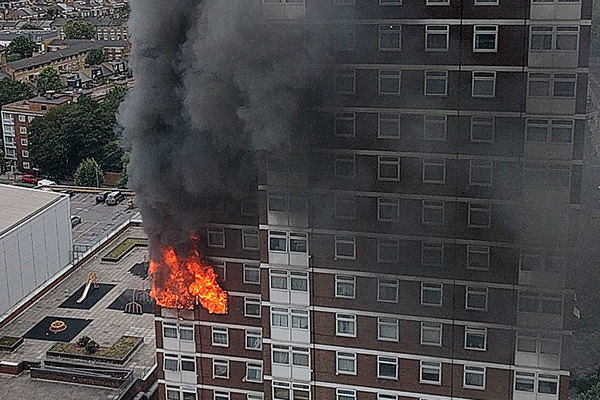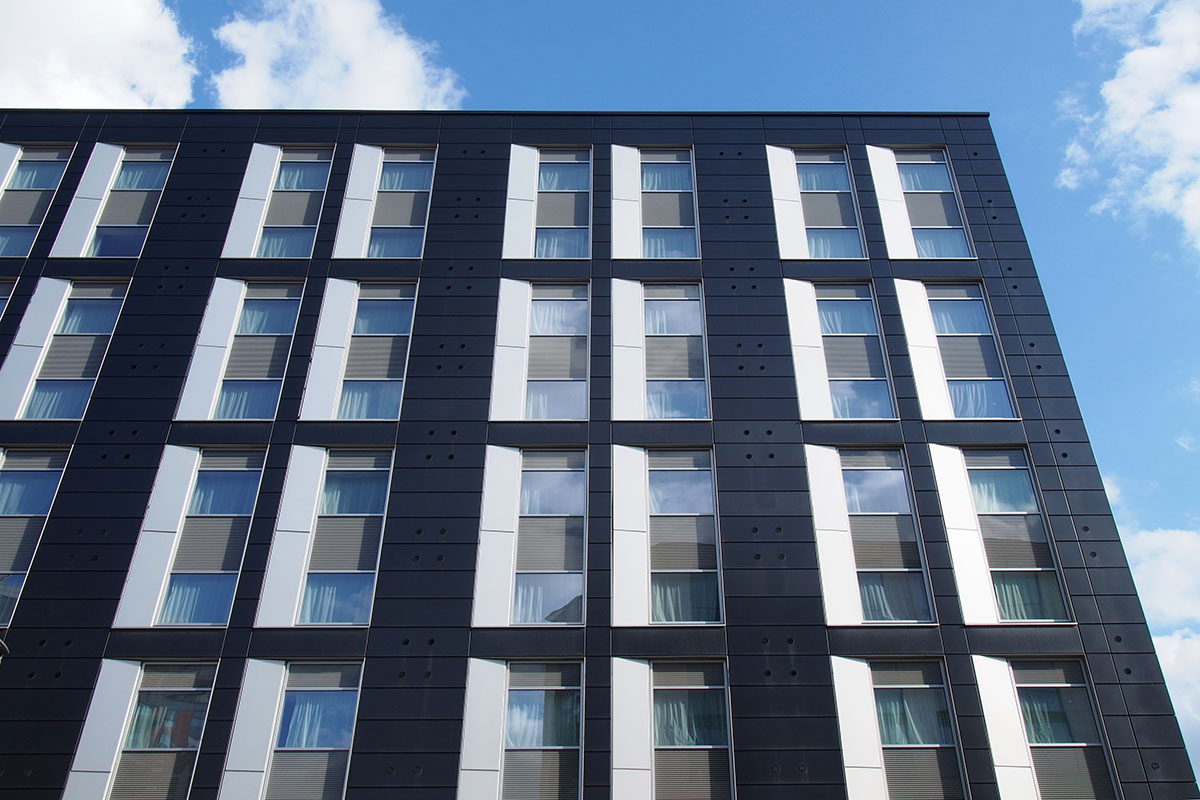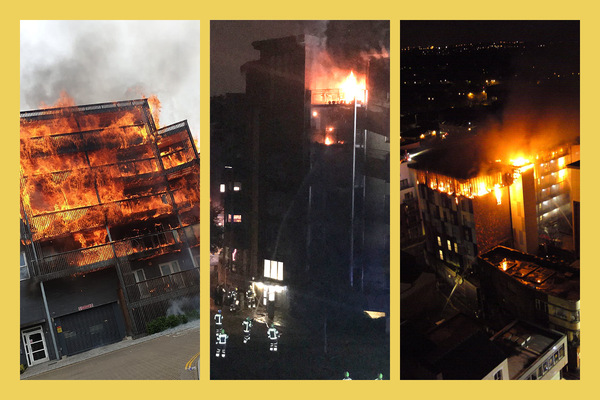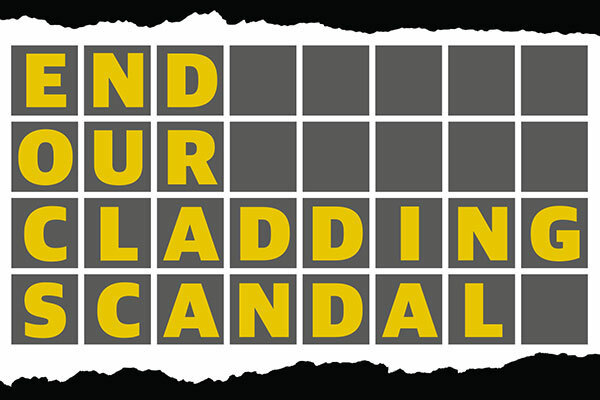You are viewing 1 of your 1 free articles
Government refuses to run fire test on polystyrene insulation despite councils’ request
The government has no further plans to carry out testing of cladding products despite a specific request from London boroughs to test systems comprising polystyrene, a document obtained by Inside Housing has revealed.
Minutes of a meeting held between London boroughs and government officials in September show that boroughs requested information on plans for the testing of “expanded polystyrene panels”.
These panels are typically used on spandrels and beneath windows and can burn ferociously in a fire – as at Shepherd’s Court in west London in summer 2016.
But the minutes record that the officials said: “There are no plans [for testing]. Current information is that we know they are flammable, and that it is how they are installed which causes fire safety issues.”
The officials added that “there are no forward plans for further testing at this time”.
Polystyrene is highly flammable and ignites at relatively low temperatures. It has been linked with huge fires, often in commercial buildings and warehouses, where its use is more common.
However, it has been increasingly used on high-rise residential buildings in recent years, particularly as an ‘insulated infill panel’ in a window set, fronted by either aluminium or steel. The windows on Grenfell Tower included large polystyrene panels.
The government has refused to fund the removal of any combustible materials from high rises except aluminium composite material (ACM) cladding.
It comes as Inside Housing launches a general election campaign calling on the next government to take action to solve the national crisis of dangerous cladding.
The campaign calls for a building safety fund not limited to ACM and buildings over 18m tall, as well as a national taskforce capable of inspecting buildings, prioritising and ordering work.
It says this is because its testing proves that ACM carries a “unique risk” – but it has declined to test a number of products that may perform as badly or worse in a fire. These include non-fire-resistant high-pressure laminate (HPL), timber and polystyrene.
Jonathan O’Neill, managing director of the Fire Protection Association, said he is “hugely worried” about polystyrene. “It is a combustible product and it will burn,” he said.
The minutes, which record a meeting held in September, also reveal that the government had promised to release the results of its non-ACM testing programme “over the next month”. However, this was never done.
The materials being tested are zinc composite material, copper composite material, aluminium honeycomb, HPL, brick slip systems and reconstituted stone.
Only the HPL result has been released. This used a fire-resistant version of the product with non-combustible insulation and recorded a narrow pass.
Industry sources have told Inside Housing that an estimated 80% of the HPL products on the market are a lower grade of fire resistance.
The minutes also reveal that the government has established a “protection board” chaired by the National Fire Chiefs Council to ensure that residents of buildings clad with ACM are safe and to potentially prioritise removal work.
This approach is currently being piloted across 10 buildings in London, Merseyside, Manchester and West Yorkshire.
End Our Cladding Scandal general election campaign: full coverage
The cladding scandal is far from over. Here’s why we need a fresh approach
Click here to read the full story
Ahead of the general election, Inside Housing revisits our national cladding scandal and sets out what needs to be done to prevent any further tragedies. Peter Apps reports.
The cladding crisis Down Under: what we can learn from the response to Grenfell in Australia
Click here to read the full story
Five years ago a fire spread up Grenfell-style ACM cladding on a high-rise in Melbourne. This prompted an overhaul of the Australian state of Victoria’s building safety regime. Peter Apps finds out what the UK could learn.
More than 100,000 buildings outside scope of fire safety measures, minutes reveal
Click here to read the full story
There are more than 100,000 medium-rise homes that fall outside new regulations aimed at making buildings safe in the aftermath of Grenfell, including the ban on combustible cladding, Inside Housing can reveal.
It’s only a matter of time until the next Bolton unless the parties step up to the plate on fire safety
Click here to read the full story
Inside Housing’s new election campaign calls on the main political parties to commit to taking action to prevent what currently seems like an inevitable further tragedy. It’s time for everyone to step up, writes Martin Hilditch.
Leaseholders fear missing out on £200m cladding fund as bidding deadline approaches
Click here to read the full story
Leaseholders living in blocks seeking government funding for the removal of Grenfell-style cladding have raised concerns over meeting the deadline for applications, while criticising the lengthy process being run by the government.
Government refusing to test polystyrene panels, despite request from London boroughs
Click here to read the full story
The government has no further plans to carry out testing of cladding products despite a specific request from London boroughs to test systems comprising polystyrene, a document obtained by Inside Housing has revealed.
End Our Cladding Scandal: campaign asks
The next government must:
- Create a ‘building safety fund’ to help pay for the necessary remediation work to affected buildings in the social and private sector – not just those with ACM cladding and above 18m
- Set up a taskforce, with the involvement of residents, capable of inspecting buildings, prioritising and ordering work and ensuring leaseholders are protected from unnecessary costs













